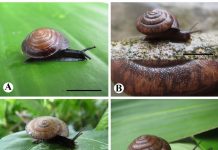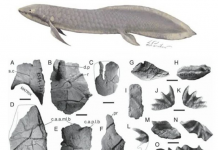Assistant Professor Dr Wilawan Promprom and Assistant Professor Dr Wannachai Chatan, researchers from the Department of Biology, Faculty of Science, Mahasarakham University, discovered Sindora stipitata (Detarioideae, Leguminosae) a new species from Thailand.
Abstract: Sindora stipitata, a new species in the subfamily Detarioideae (Leguminosae), collected from Nakhon Phanom Province, Thailand, is described and illustrated. The new species is morphologically similar to S. leiocarpa but differs in its smaller stature (3–5 m high), 6-foliolate paripinnate leaves, falcate persistent stipules, presence of a petal auricle, absence of a petal claw, stipitate ovary and capitate stigma. A key to the Thailand and Malesia species of Sindora is provided.
Sindora stipitata Chatan & Promprom, sp. nov.
urn:lsid:ipni.org:names:60476588-2
Diagnosis: Sindora stipitata is very similar to S. leiocarpa from Malesia, but it is easily distinguished by the following characters: a smaller stature (3-5 m high), 6-foliolate paripinnate leaves, falcate persistent stipules, presence of a petal auricle, absence of a petal claw, stipitate ovary and capitate stigma.


Flowering and fruiting: Flowering in March–May and fruiting April–June.
Distribution: The new species is a Thai endemic and is known from only the type locality in the Phulangka National Park, Ban Pheang District, Nakhon Phanom Province, North-eastern Thailand.
Ecology: This new species grows in open areas of dry deciduous forest at an elevation of 250–350 m.
Vernacular name: Ma Kha Tae Nakhon Phanom, Mak Tae. (มะค่าแต้นครพนม หรือหมากแต้)
Etymology: The specific epithet refers to its distinctly long ovary stipe. This character is one of many morphological characters that distinguishes the new species from its closely related species.
Preliminary conservation status: Sindora stipitata is known only from the type locality and its estimated extent of occurrence is less than 100 km2. The number of mature individuals was less than 1,000 and the occupied area is continuing to decline slightly. Therefore, it should be considered as “Critically Endangered” according to the IUCN criteria B1 (IUCN 2017).
Promprom W, Chatan W, Saisaard P (2018). Sindora stipitata (Detarioideae, Leguminosae), a new species from Thailand. PhytoKeys 100: 149–156. https://doi.org/10.3897/phytokeys.100.25870







